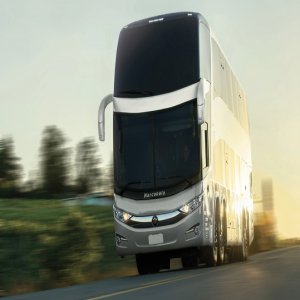Decisive, Target-Driven Method for Maintaining Position in Mexico

STORY INLINE POST
Q: Which critical success factors enabled Nissan to become the best-selling brand in Mexico?
A: Nissan has a rich history in this country, which was the company’s first operation outside of Japan. While Nissan is the number one brand in Mexico, I am often asked why we cannot duplicate this success in other countries. We are selling the same cars in Mexico as we are in other countries, with some of those worldwide sales actually linked to Mexico due to the 70% of production we export. Our success can be attributed to our people and our dealer network. Our people are committed to Nissan and work to their highest potential every day, while our dealers are some of the best that I have ever had the pleasure of working with. Nissan has various committees through which it engages with its dealers in areas such as aftersales, digital, and sales and marketing. Each month, these committees meet to discuss company plans and set new goals. For example, in 2013, we set the goal of selling 300,000 units in the 2014 fiscal year. This represented a growth of around 17-18%, and we established how we were going to achieve this in terms of products, positioning, and marketing in collaboration with our dealers. We agreed on the numbers, we agreed on the goal, and then we executed the plan. Today, the dealership groups sell more than 4,500 cars per year per group, around 1,400 per dealer, making them financially stronger. If the dealers are financially strong, then they will hire the best people to work for them, which will better represent our brand. Another reason why Nissan has achieved these figures is because we made the right choices and executed them perfectly. One of these decisions was to establish the new financial arm Credi Nissan around ten years ago. Today, this has paid off, because 55% of the total vehicles sales in Mexico are now financed, while the other 45% are paid for in cash. Our financial arm helped us to provide financing to our dealers and to offer good rates and financial programs directly to our customers.
Q: What are the key strategies that Nissan is adopting in order to improve domestic sales in Mexico?
A: Mexico’s global positon for domestic auto sales shows a huge opportunity for the industry. One of the problems that the country has is access to credit. The informal economy is huge; 60% of the population works but their earnings are not registered. To try to deal with this, Nissan launched a new program through Credi Nissan in 2014 called Súbete. This is a special financial program for people that have income but do not have a way of proving it. Last year, we sold 800 cars though this program, but it still has huge potential. The illegal importation of used cars from the US is highly detrimental to the market, but the figure is now dropping rapidly. There are around 25 million cars in Mexico, but almost 8 million of those have been illegally imported from the US. We could still improve the used car segment because it will greatly improve the domestic market. The domino effect of this improvement will dramatically change the sales landscape in Mexico, bringing a new wave of investment to the country. In order to double car sales in Mexico, the country would need at least four more manufacturing plants, as well as 50-60% more dealers than it has today. This kind of development would have an economic impact by boosting construction, architecture, law firms, and many other businesses, including those in the Tier 3 supply chain, which survives primarily on the aftersales market.
Q: How have Nissan’s Aguascalientes A2 operations developed since the expansion was completed in 2013?
A: The expansion in Aguascalientes was great for Nissan as it has helped us to meet the current demand. We are now able to focus the production at Aguascalientes I on local supply, while Aguascalientes II covers the export market. The expansion can produce 170,000 units per year, which made an important contribution to the 308,000 units that we produced in 2014. If you combine the production rates of Nissan Mexicana, the company is producing a new vehicle every 38 seconds. All of our processes are just-in-time and have to be extremely precise, but even with that fast pace, you will not see inventories on the line floor. Our operations are top of the class, globally. On top of that, we finished our new distribution center in 2014, further expanding our logistics operations. Six hours after a vehicle is produced, it is already in our vehicle distribution center. Another six hours later and the same vehicle is either at the border to the US, or in Veracruz, ready to cross the ocean.
Q: The success of the X-Trail and the Pathfinder has been clear in Mexico, but how is Nissan performing in other segments?
A: Combined, the X-Trail and the Rogue used to sell 500 units a month in Mexico. Today, the new X-Trail is selling around 1,600 a month. However, during some months we do not have enough supply to meet the demand, so we are unable to keep the top spot for sales. In the overall SUV segment, Nissan is performing very well. The Pathfinder is in second place, the Murano is selling less but it is helping the image of the brand within the segment, and the Juke is a smaller SUV which is performing quite well. Fortunately, all of Nissan’s vehicles experience good performance rates in Mexico. Many think that the Tsuru is the number one car for Nissan in Mexico, which would have been correct six years ago, but the Versa is now our best-selling car in this market. The Tiida sells around 2,000 a month, Versa is generally moving around 4,800 but still hits figures as high as 5,200 occasionally. In March 2015, our performance for the Versa was outstanding; it beat the Chevrolet Spark to become the leader in the market for this segment. The Sentra is in second place because we are not willing to enter into a price war with the Volkswagen Jetta. Whenever we start a new sales campaign, we will not move on the price. Nissan knows that if we reduce the price of the car, we would reduce the value of the car in the eyes of our customers, which would reduce future sales. Therefore, every month, we measure the residual value of our products in order to prevent this. All the seeds that we sowed almost a decade ago are now fully grown, and Nissan is happy to be harvesting them.
Q: How would you describe the reaction of Mexican consumers to the Nissan Leaf?
A: Nissan was the first company to launch an Electric Vehicle (EV) in Mexico. The company does not just believe in the future; it creates the future. While the infrastructure was not available in Mexico to support this car, we felt that it was better to introduce the Nissan Leaf now so that the future would arrive faster. It is very difficult to introduce this technology without infrastructure or incentives from the government, particularly when nobody cares about zero emissions cars. The Mexican government does not currently offer incentives for EVs, but Nissan believes that these vehicles are the future and is working with the government to make them a viable option for the country. Unfortunately, we cannot demand the government to provide incentives for us to sell our cars. What we are asking is for the government to do something for the environment, perhaps by making an exemption to the value added tax (IVA) when buying an EV. Ultimately, if the cars do not get sold then the government does not receive this money anyway. If the government agrees to a tax exemption, the impact on the price of the car will be huge at around 16%. This money can be used by Nissan to invest in infrastructure for the benefit of the country. If other brands can join Nissan and BMW in this mission, then we will be able to improve infrastructure must faster.























